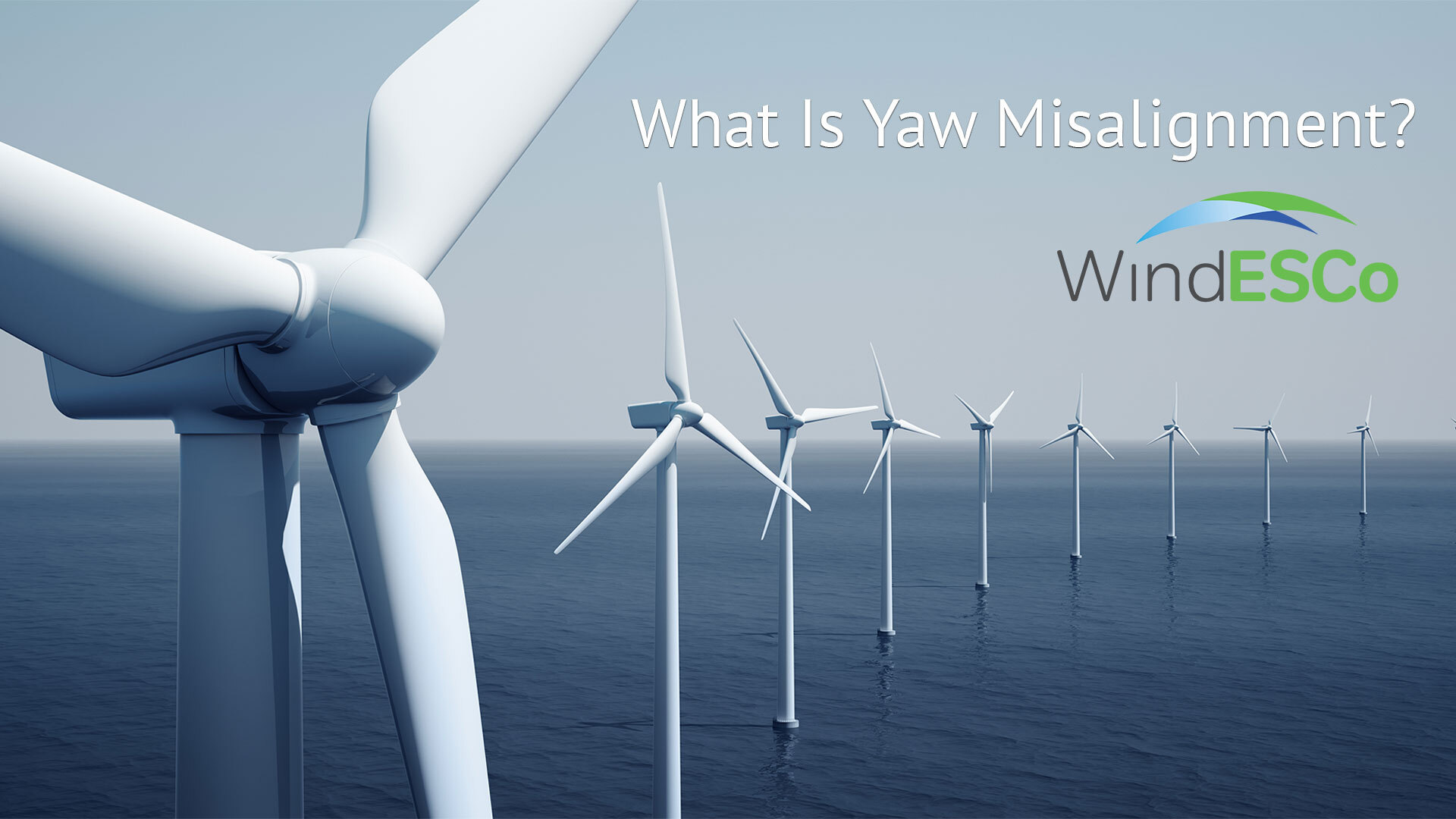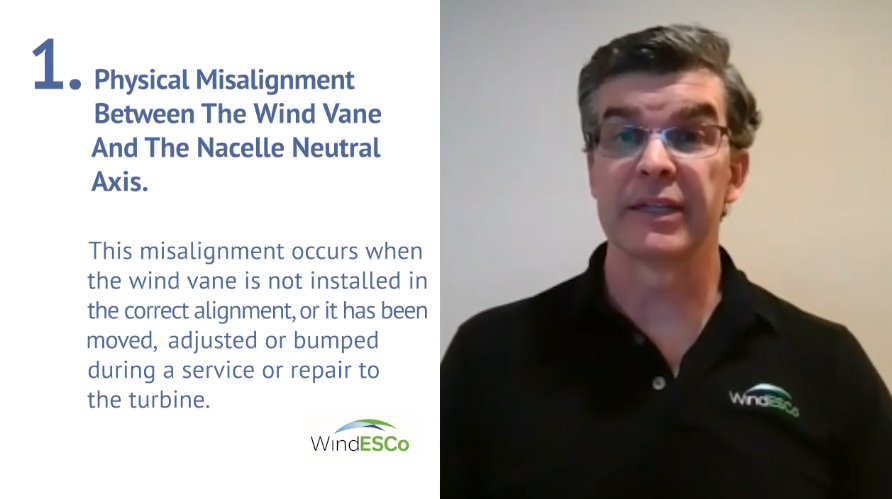What Are the Causes of Yaw Misalignment?
Wind farm operators are well aware that yaw misalignment can significantly reduce turbine power output. However, despite knowing and understanding...

One of the obstacles to maximizing operating margins for wind projects is the impact that yaw misalignment has on optimal turbine performance. So what is yaw misalignment, and why should it matter to you?
Power is only generated in turbines by wind that is perpendicular to their blades. For optimum power output, a wind turbine's blades should remain perpendicular to the wind as often as possible. Every turbine is outfitted with technology to measure the wind direction and adjust accordingly. Examples include a wind vane, which only measures wind direction, or a nacelle sonic anemometer, which measures wind direction and speed.
Any measured difference between the wind direction and the nacelle position of the turbine is known as the yaw error. When the yaw error is at 0°, the turbine is ideally pointing directly into the wind. Any wind turbine that is not pointing directly into the wind is experiencing what is known as yaw misalignment.
Simply put, yaw misalignment means that your wind turbines are not fully facing into the wind. A variety of factors can cause this, but there are two main types of yaw misalignment.
Dynamic yaw misalignment occurs as a result of the wind changing direction. The wind is constantly shifting, so your turbine is often not in a position to produce the maximum power output. When the measured yaw error becomes large for a long enough period, as defined by the turbine control parameters, the turbine will use its yaw motors to move the nacelle back to 0° yaw error, temporarily eliminating the dynamic yaw misalignment.
Static yaw misalignment is a bit harder to nail down. It occurs when your wind turbines are not pointing directly into the wind, even when the yaw error is measured as 0°. The challenge is that static yaw misalignment is invisible to the turbine controller because the turbine controller cannot see this difference between the measurement and reality.
It may be that the physical wind vane is misaligned, making it difficult or impossible for the turbine to sense the actual direction of the wind. You may also have a software issue; an incorrect parameter in your software means that your system cannot accurately correct for yaw misalignment. Whatever the cause, when your turbines are consistently facing the wrong direction—even slightly—they are not generating the maximum power possible. And less energy means less revenue generated by your wind plant.
Analysis and experimentation have shown that the loss of power typically varies with the square of the cosine of the yaw misalignment. For example, there is a 0.5% loss due to a 4° static yaw misalignment, but that quickly increases to 2.5% power loss with a 9° static yaw misalignment. As such, it is essential to monitor yaw misalignment continuously. Otherwise, it will significantly impact the overall revenue generated by your wind project.
Static yaw misalignment affects almost every wind project, big and small. Addressing this issue is a vital step to optimizing your wind plant. In a recent engagement, WindESCo worked with UPC Renewables to identify and address yaw misalignment in their wind plant. The result was a 2% increase in AEP. Download the case study to see how UPC Renewables was able to transform its wind project.

Wind farm operators are well aware that yaw misalignment can significantly reduce turbine power output. However, despite knowing and understanding...
.jpg)
We've spent quite a bit of time discussing yaw misalignment. Our past blogs have addressed what yaw misalignment is, the different types, how it can...